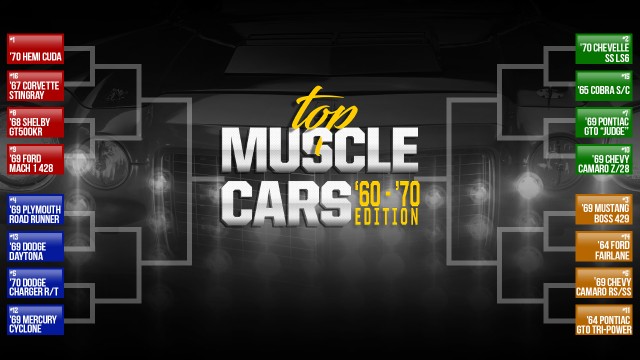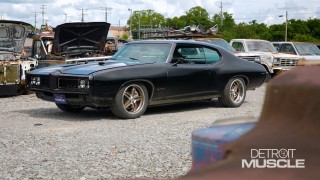Throughout the years, there have been numerous memorable and spectacular muscle cars. From the 70 Hemi Cuda to the Boss 302 Mustang, our goal is to find out which muscle car takes the crown as the “Top Muscle Car.” Who gets to decide? You do!
Our list was put together based on the following definition for a muscle car:
- American Made 2-Door
- V8 Powered
- Rear-Wheel Drive
- High-Performance Vehicle
- Built From The Mid 1960s to Early 1970s
In the voting below, each round will be open for 3 days. After voting, sign up with your email address to receive the results of each round and be informed when each new round or new bracket contest is available.




















